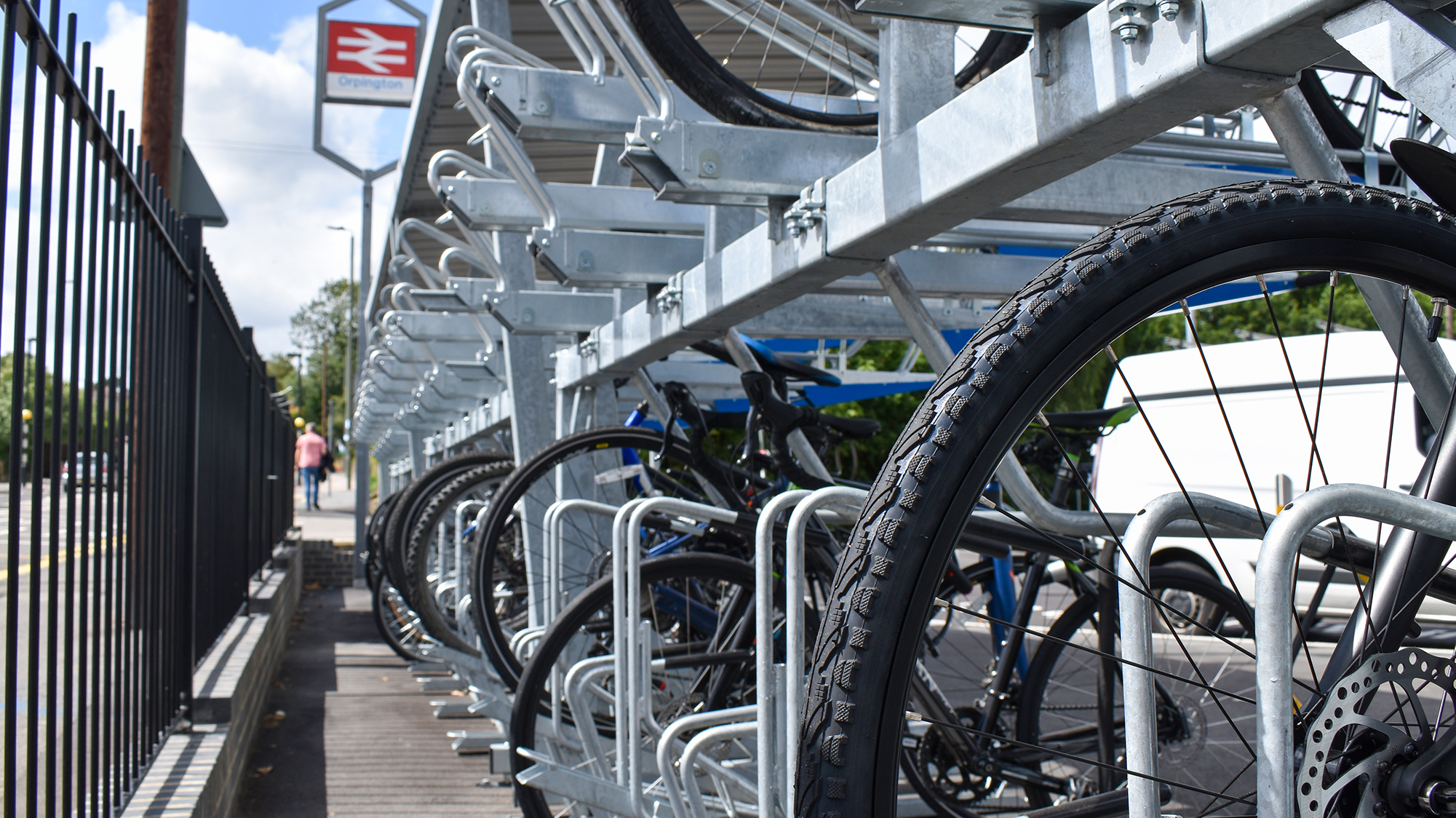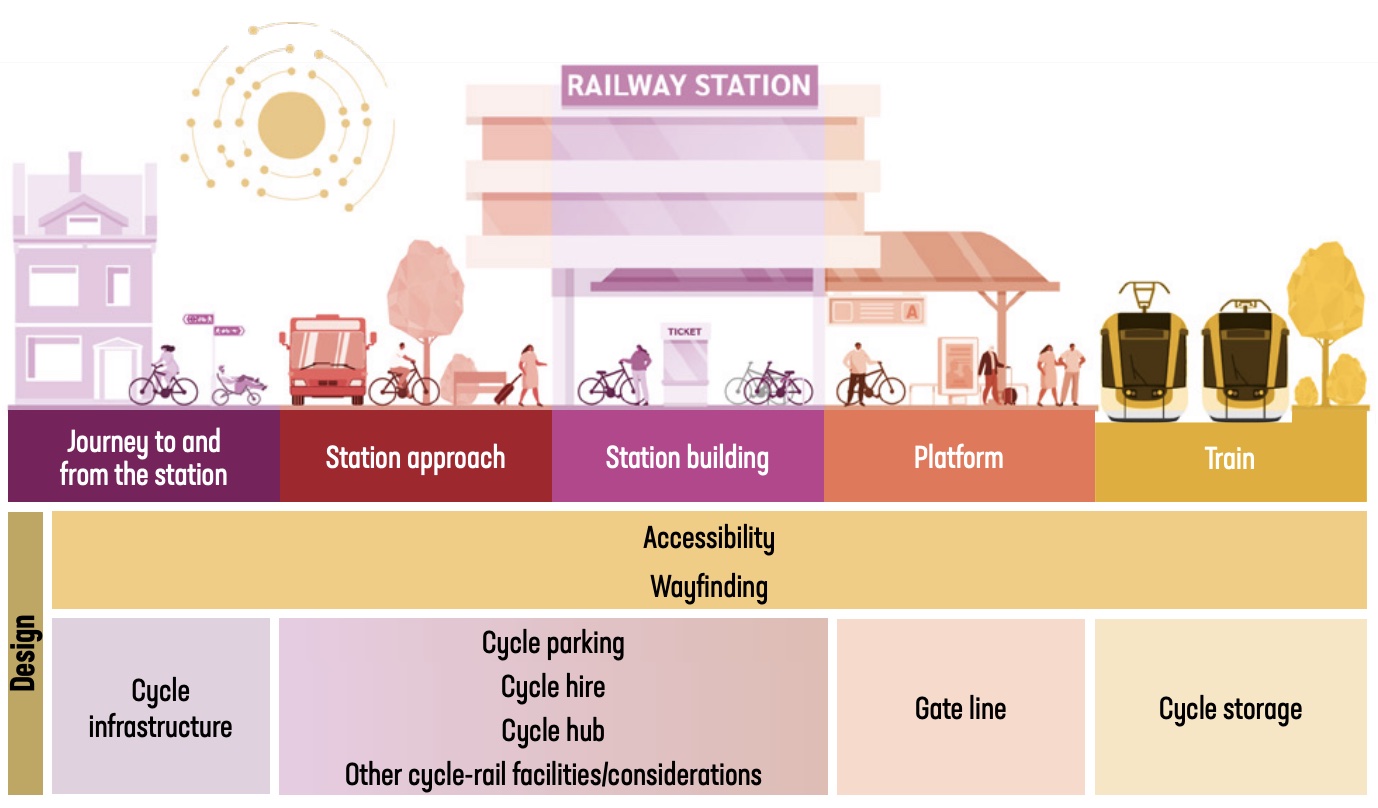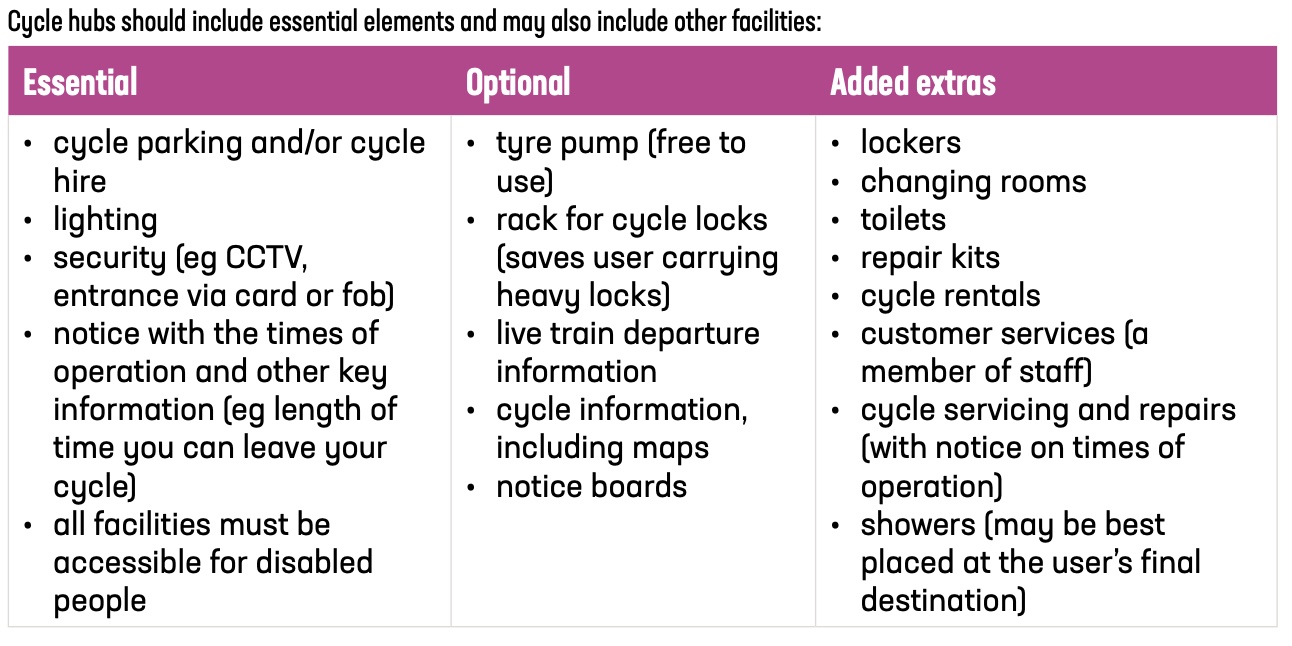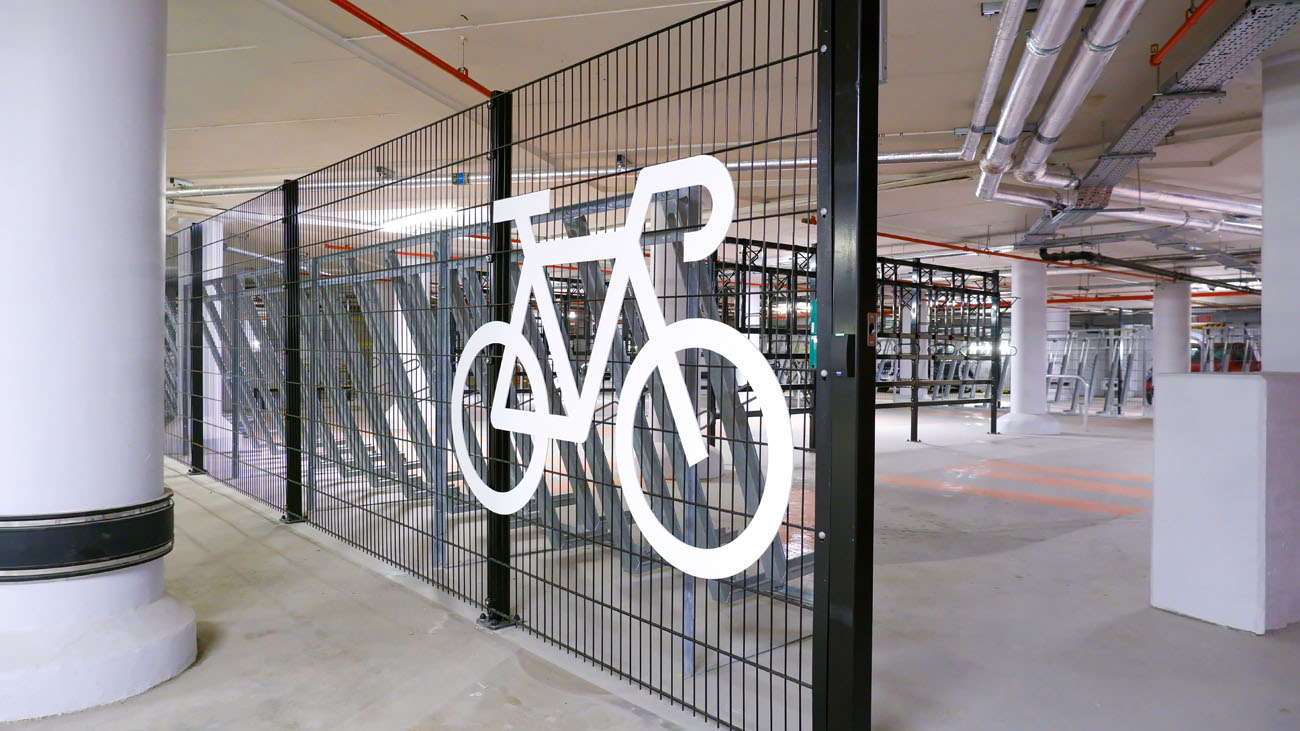How can we better integrate cycling and rail travel? That’s the question transport minister Jesse Norman wants answering, and why an updated version of the Cycle-Rail Toolkit has been created by Systra and Sustrans.
The Cycle-Rail Toolkit contains a wealth of guidance for rail station owners on how best to design stations for cycling. The aim is to integrate active travel and rail travel to make it simpler and more welcoming for those choosing to cycle to or from a train station in the UK.
First published in 2012, then again in 2016, this 2023 edition contains all the updated guidance you would expect. Similar to our Guide to UK Cycle Parking Standards, the Toolkit relies on pulling together existing advice from existing guides.
There is a substantial section in the Toolkit dedicated to cycle parking, which we’ll cover in more detail here. The importance of secure, accessible, and welcoming cycle parking is a major component to cycle-rail success.
According to Sustrans, “64% of people across the UK would like improved cycling infrastructure that better links with public transport, such as secure cycle parking at train stations.”







